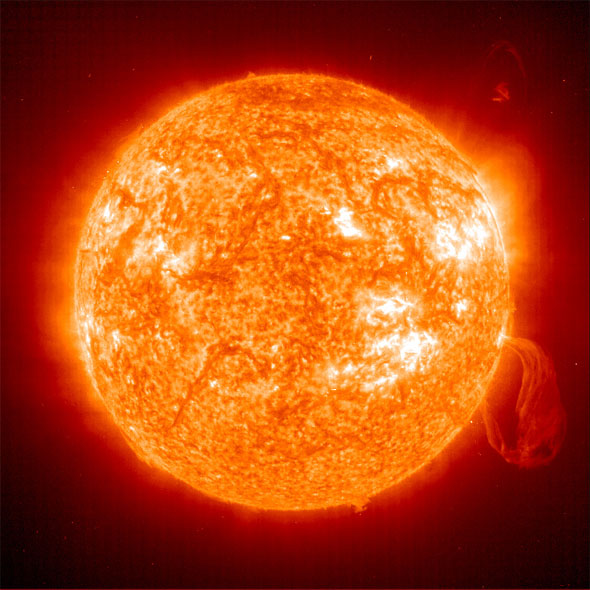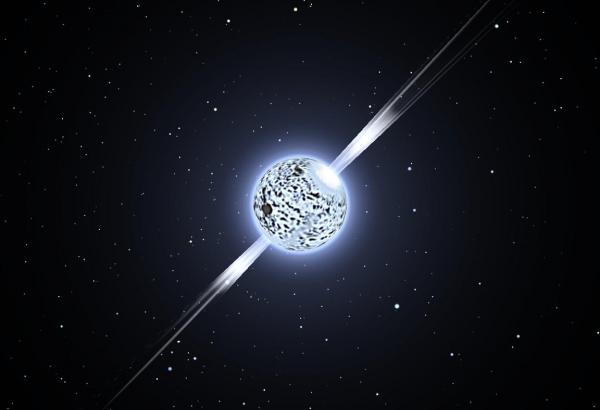The Formation:

Neutron stars are one of the universes
most extreme objects, they can have the mass of
several of our suns, are the size of a small city
and can rotate at speeds of almost 1/3 of the speed
of light. How does this all start? By a
star running out of fuel.

Source(Standard_Sun)
Here we see
our sun, with the normal events of most stars
occurring such as fusion and emmision of large
amounts of radiation. This is the stage that
most of the visible stars we see in the sky are
at. The next stage in stars lives is when the
star runs out of it's main source of energy,
hydrogen.
At the
center of most stars is a core of plasma, within
that core fusion takes place. Our sun
undergoes constant helium fusion, where two helium
atoms slam into each other and fuse to form oxygen
and carbon (enchanted). When the star runs out
of helium to fuse, a new kind of fusion occurs,
where the now formed oxygen and carbon atoms fuse
into things like neon, silicon and iron.
However fusion does not occur past iron since it is
the last atom to give off energy during
fusion.
As more and
more of the core gets turned into iron from the
fusion reactions, less and less fusion energy is
pushing out holding the star up. At some point
the star will die and go supernova, leaving behind
the mostly iron core which is now collapsing in on
itself and we are left with something like
this

Source (Bowers, Steve)
This is kind
of what a Nuetron star might look like.
Interestingly, these super dense stars are not all
that bright, since it has been almost completely
collapsed and nothing but iron, neutrons, protons
and electrons are left, no nucluer fusion
occurs. This also makes these stars quite hard
to find, even with high powered telescopes.
Source (Starry_Background)
|